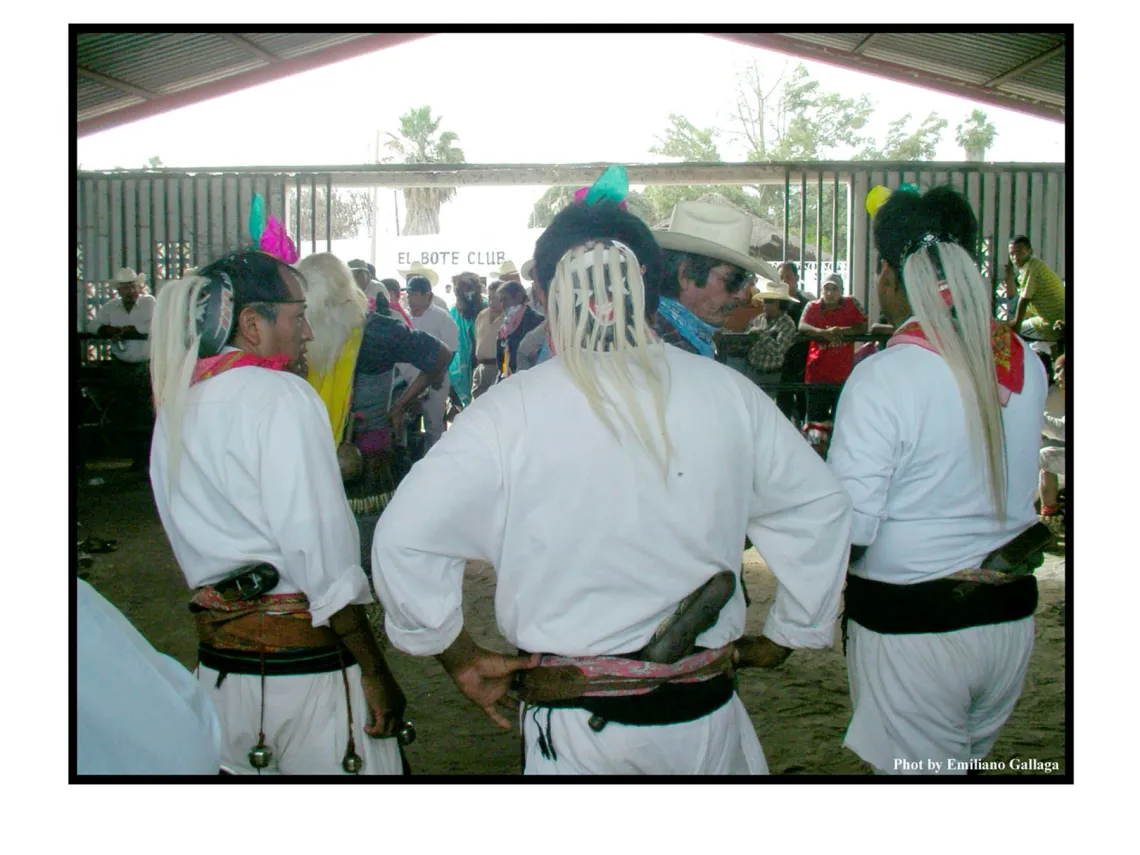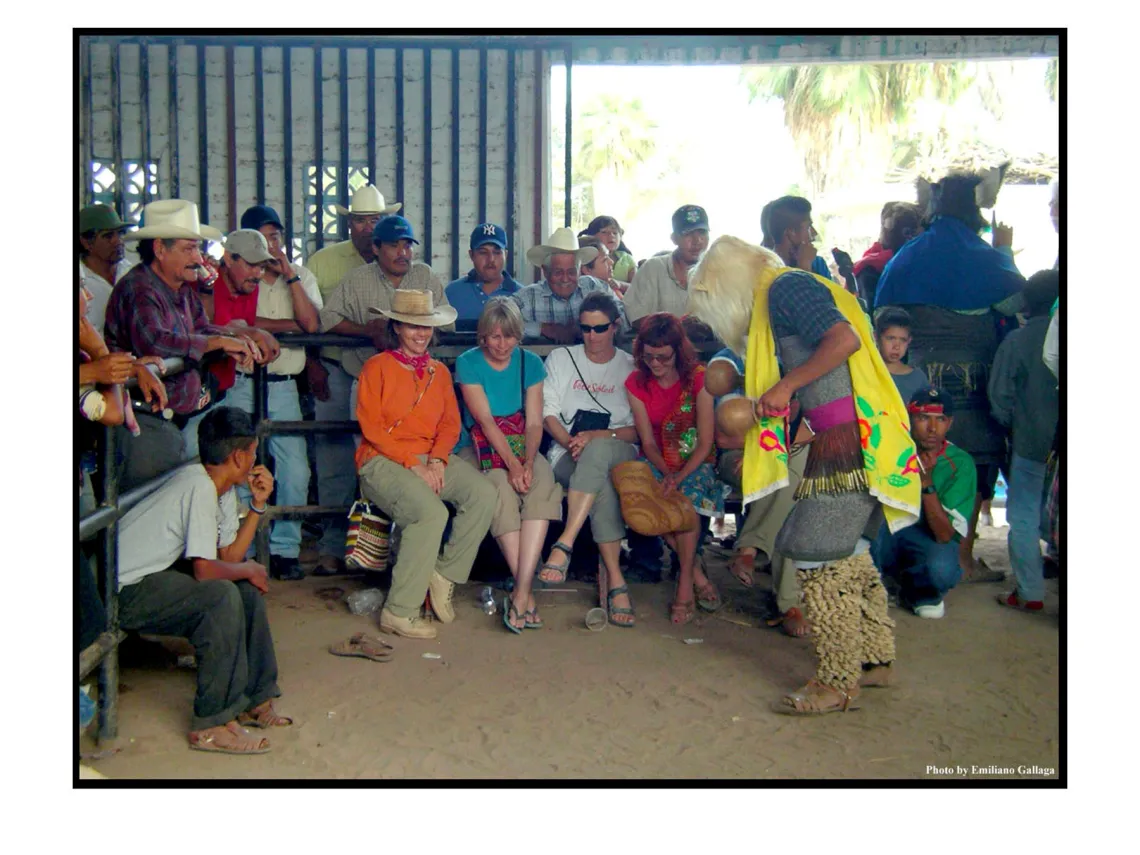The James S. Griffith Collection of Mayo and Yoeme Pascola Masks
Masks at the Fiesta
Masks remain alive in Mexico’s Indian and mestizo communities today as before. This is in contrast to a history of observing masks as inanimate pieces of art that one associates with museums, galleries, or private collections. As living representatives, masks are used and integrated as essential elements for the cultural survival of a group in Mexico and elsewhere around the world. When not in caring storage, masks come to life particularly when worn in a festivity or ceremony. Wearing a mask allows the holder to pass beyond certain traditional rules and for a short time assume some other body for the purpose of the Fiesta.

Pascola dancers at Etchojoa, Sonora
photo courtesy Emiliano Gallaga
Since the pre-Hispanic period, fiestas, or festivities, permeate all aspects of indigenous life as religious, agricultural, and socio-political events formed a calendar in relation regulating the community cycle. At the Fiesta, food, drink, music, movement, colors, and smells intermingled, multiplying and enhancing the beauty inherent in the everyday. It also provided an opportunity in time and space to visit and commune with family members and friends, establish and tighten social relationships, to sell and buy, and to celebrate and reinforce one’s community ties and identity. Realizing the importance of the existing Fiestas among indigenous peoples, Europeans during the Colonial period seized the opportunity to “acculturate” these “Indians.” Facilitated by the religious orders in charge of Indian conversion to Catholicism, Catholic celebrations in the Americas incorporated local dances, costumes, personages, rhythms, colors, and foods and quickly developed into something removed from their European counterparts. Anthropologists refer to this process as syncretism: a cultural blending of European and native religious traditions.

Semana Santa celebration at Etchojoa, Sonora
photo courtesy Emiliano Gallaga
Pascola dancers and masks exemplify, among many other traditions and elements, the Mayo’s syncretism: associated with Catholic celebrations, the pascolas continue to demonstrate the local indigenous contributions to the Fiesta. Yet, we cannot stop at a simplistic idea of unity; it is necessary to look beyond the Catholic significance of the death and resurrection of Jesus and relate it to the Semana Santa(Holy Week) celebration among the Mayo today. In this, and all the other Mayo celebrations, the Catholic world is seen to interact with the huya aniya (supernatural/magical world) of the Mayo Indians to the point that is not possible to distinguish clearly where one ends and the other starts. Through such oral and visual transmission of the community’s values, norms, and worldview, Mayo celebrations, as well as other indigenous and mestizo festivities in Mexico, provide the space and time for people to become social beings and in their participation register, or not, their desire and acceptance to belong to a particular community.
Forged through a coming together, almost regardless of the circumstances, of indigenous and European perspectives on the world, traditions like the pascola are clearly not frozen in time. Like the masks, these traditions continue to change and adapt to developments occurring in communities everywhere all the time. While many pre-Hispanic celebrations, customs, and festivities disappeared with the Spanish conquest, and although others that survived that first onslaught have since undergone radical change or destruction by the hands of modernity and globalization, many more will undoubtedly disappear in the future. Fortunately, today, it is still possible to witness pascola dancers in several indigenous communities in northern Mexico, including the Mayo Indians. It is upon us, to give them their due respect and the relevance they deserve in an effort to preserve for future generations the messages communicated through the carvings of a Mayo mask or the motions of a pascola dancer.





